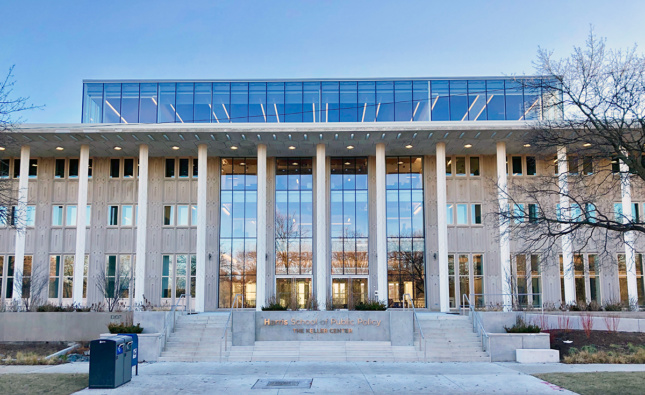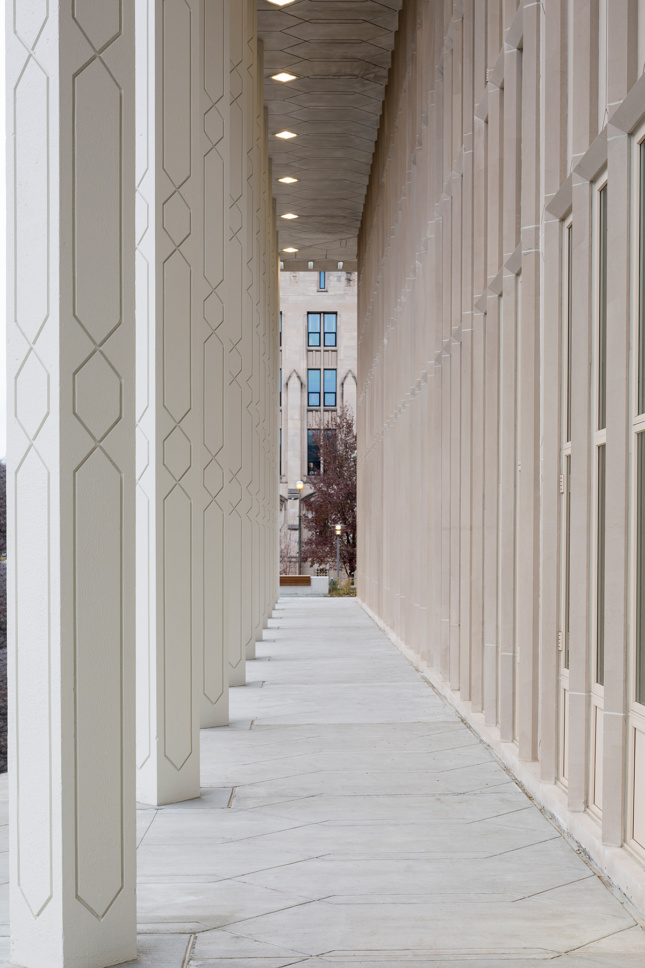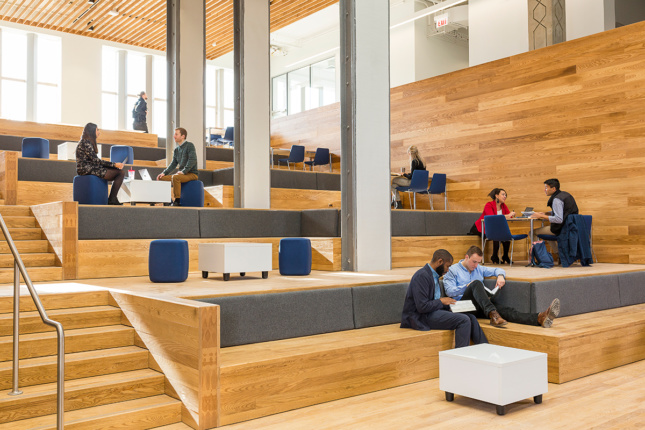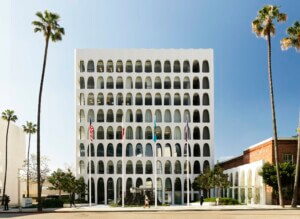After five years of planning and construction, Chicago-based architecture and planning firm Farr Associates and artist Theaster Gates have dramatically transformed a 60-year-old dormitory at the University of Chicago into a state-of-the-art research center and student hub, known as the Keller Center.
Originally designed by Edward Durell Stone in 1962, the once dark and closed-off concrete structure served as the University of Chicago’s New Graduate Residence Hall. While some of Stone’s initial design was preserved—including the building’s slender columns, projecting canopy, and mid-century modern aesthetic—the addition of a glass roof and brilliant limestone facade illuminates the fully renovated interior, which is now home to the university’s Harris School of Public Policy.
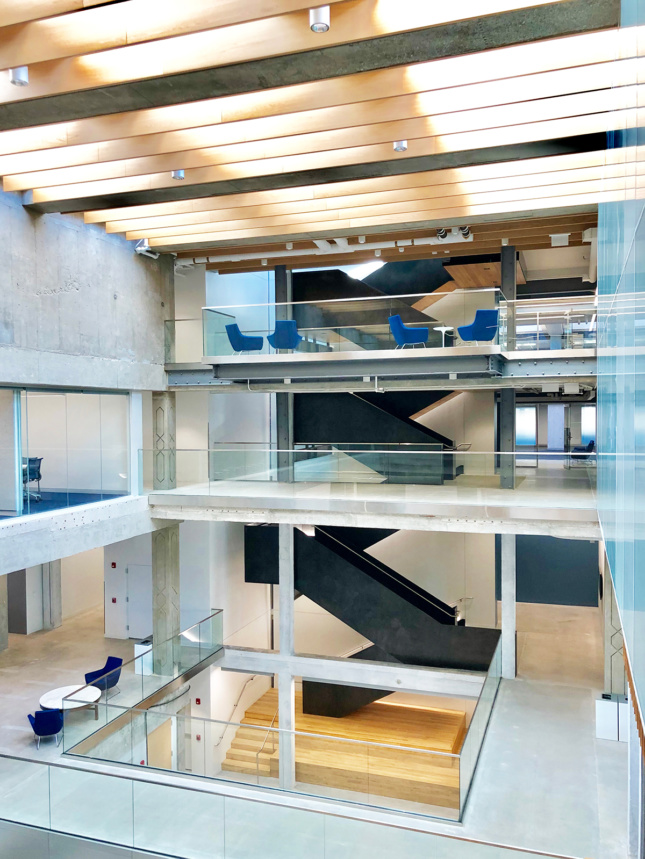
The design team foregrounded sustainability—the Keller Center will be the first LEED Platinum building on the University of Chicago campus and one of the first university buildings to pursue the strict Petal Certification of the Living Building Challenge—but also thought about ways to tie the new design to the building’s past, context, and community. Farr Associates salvaged as much as possible for the renovation, preserving old doors, hooks, mailboxes, mirrors, light fixtures, and shelves for the new design. Theaster Gates came up with the idea to use lumber from damaged ash wood trees that were removed from Chicago’s city parks for a main building material for the interior of the center. Gates then hired local workers to process the trees at a mill just south of the project site, where he was able to provide job training to people on Chicago’s South Side. The center also features a rainwater harvesting system, which captures water from the roof and transports it to the building’s toilets, along with rain gardens that accommodate the region’s native species.
There were many design challenges associated with carving a new interior from the existing concrete skeleton of the building. For example, the structure lacked insulation, and it was riddled with columns and steel supports that could not be removed. The architects were forced to work around those structural hindrances, while trying to keep the space open and inviting. The result was a visually inspiring interior complete with shimmering, glass-walled classrooms, lounges, offices, meeting rooms, and a four-story atrium called the Harris Forum, which serves as a central collaboration space. The sun-streaked atrium, which was carefully shaped out of the existing structure, represents the heart of the Harris School, and it is home to a variety of discussions, world-class speakers, and events.






